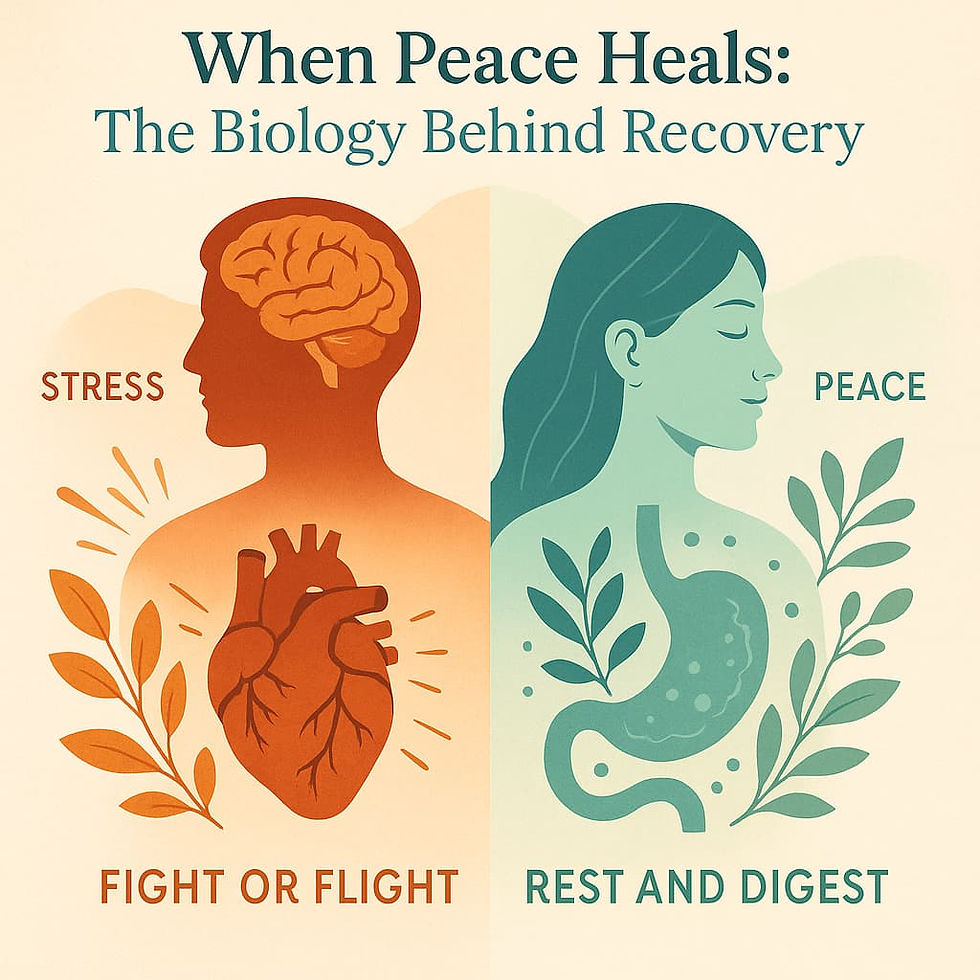Where Qi Meets Charge: A Contemplation on Healing
- Clark R. Mollenhoff III M.Ac., L.Ac.

- May 15
- 3 min read
Updated: Jul 17
The Body Listens

Healing is not a singular event, nor is it confined to a purely physical process. It is a subtle,
dynamic orchestration of responses, many of which unfold beneath the surface of awareness. Even the subtlest wound initiates a response. Before there is pain, before there is conscious recognition, the body begins to listen and reorganize. Electrical fields shift around the affected area. Cells migrate. Signals are exchanged in silence. This happens without our instruction. The body knows to heal.
Bioelectricity and the Pattern of Qi
This phenomenon was central to the work of Dr. Robert O. Becker, an orthopedic surgeon and pioneering researcher in bioelectricity. In his book The Body Electric: Electromagnetism and the Foundation of Life, co-authored with Gary Selden, Becker explored how the human body generates and uses electrical currents for healing and regulation. One of his most striking discoveries was the existence of a low-voltage direct current—what he called the “current of injury”—that appears immediately at sites of tissue damage. This current plays a vital role in guiding the body’s regenerative processes.
Becker’s experiments revealed that certain tissues, especially those associated with the nervous system, conduct these subtle currents in ways that shape cellular behavior and repair. The implications of this were profound: biological function was not solely governed by chemical signaling but by an intricate system of electrical guidance. He proposed that the perineural system, the cellular layer surrounding nerves, could serve as a communication network directing healing and maintaining systemic coherence.
This line of thinking resonates with the principles of classical Chinese medicine, which for centuries has described a body animated and regulated by Qi. Qi is often misunderstood as a mystical force or directly equated with energy, but its function is more nuanced. Qi refers to the dynamic, integrative patterns of movement, interaction, and transformation within the body. It is the way life organizes itself into rhythm, flow, and adaptation. When Qi moves smoothly, we experience health. When it becomes stagnant, deficient, or chaotic, we encounter dysfunction.
Meridians, Communication, and Coherence
Acupuncture emerged as a practice to work with this vital movement. Through the stimulation of specific points—identified through centuries of observation and clinical refinement—practitioners aim to influence the body’s internal patterns. These points are not chosen randomly. Modern research has demonstrated that many correspond with zones of lower electrical resistance and heightened conductivity. The body, it seems, is more receptive to change in certain places.
Becker’s observations offer a way to understand this receptivity in physiological terms. Just as he found that electrical currents guide growth and healing, acupuncture can be seen as a method for introducing a signal that cues the body’s own corrective response. These signals do not operate in isolation, but within the context of a larger network—what Chinese medicine has long described as meridians.
Meridians are often misrepresented as tubes or discrete anatomical structures. They are better understood as functional pathways: regions of the body through which influence—electrical, mechanical, or informational—can travel. Becker’s hypothesis that the perineural system may serve a similar integrative role bridges these two perspectives. The meridians of Chinese medicine and the conductive systems described in modern electrophysiology may be different descriptions of the same relational infrastructure. They both trace the body’s effort to maintain coordination and coherence.
Repatterning Toward Wholeness
In this light, healing becomes an act of repatterning. Whether one uses the language of Qi or bioelectricity, the essential insight is the same: the body is a complex system seeking balance. Acupuncture does not impose a cure. It provides a context, a stimulus, an invitation. The needle becomes a message placed into a responsive field. Sometimes that message is enough to restore a rhythm that had been lost.
The integration of Becker’s research into contemporary discussions of healing does not diminish the wisdom of ancient systems. Rather, it illuminates their relevance. We are not replacing myth with mechanism. We are uncovering ways in which both are rooted in careful observation. Becker’s legacy is not merely scientific; it is integrative. It invites us to reconsider what we mean by healing, and how the body understands itself.
Listening Across Traditions
In contemplating where Qi meets charge, we are not searching for equivalence, but resonance. We are asking how different traditions, using different tools and vocabularies, might be describing aspects of the same truth. Healing, in both frameworks, involves attention, intention, and the restoration of flow. Whether through the migration of ions or the cultivation of vitality, the body listens. It repairs. And it remembers the pattern of wholeness.




Comments